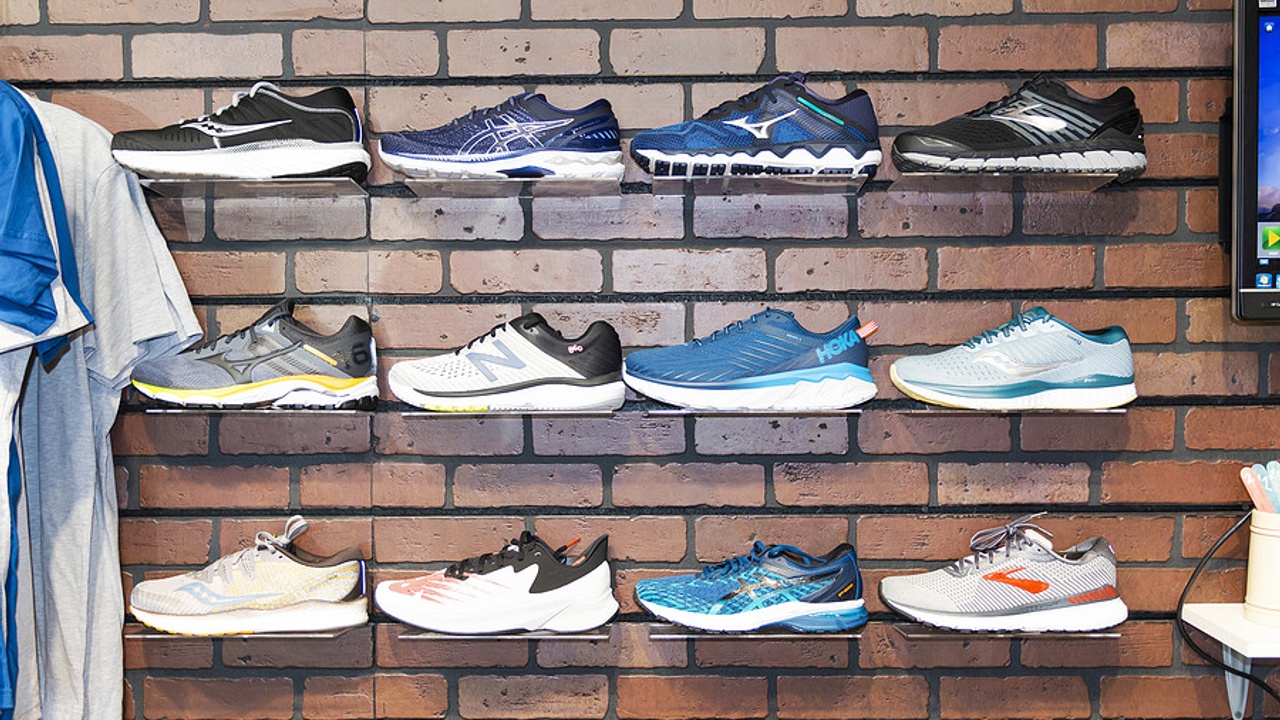Shoes, shoes, shoes! There are so many to choose from, making it hard to select the right pair. As a result, I am often asked for advice on this purchase. So, here’s what I usually say: Your shoes provide the interface between your feet and the ground. Good posture and movement patterns start with proper foot sensing and contact. Your foot hitting the ground is the first link in the kinetic chain of the body that leads all the way up to your head. So, believe it or not, what’s on your feet may be the cause of your neck tension. This is because the shoes you are wearing may or may not enable your foot to move freely and feel the ground correctly through the gait cycle, whether you’re walking, hiking, or running. Consequently, improper foot mechanics can cause compensatory movements all the way up your body to the neck.
Foot Mechanics in Walking
Before I advise you on which shoes to buy, I need you to understand how the foot should move when you walk. During the gait cycle, the foot moves through all three planes of motion–sagittal (front to back), frontal (side to side), and transverse (rotational). For this discussion, I am going to focus on what the foot does in the sagittal and frontal planes.
Sagittal Plane Foot Movement
Look at the picture to the right. The feet (well, shoes) shown here move from heel strike, with contact near the front of the heel (right shoe), to toe-off (left shoe), where the big toe extends and is the last part of the foot to leave the ground. To facilitate this smooth transition from foot to foot, your brain needs to be able to sense the interaction between your foot and the ground. In other words, you need to be able to feel different parts of your foot as you move from heel strike to toe-off. Primarily, you need to feel your heel as you start the gait cycle, then sense your arch as you come into mid-stance, and finally be aware of your big toe as your foot comes off the ground.
(well, shoes) shown here move from heel strike, with contact near the front of the heel (right shoe), to toe-off (left shoe), where the big toe extends and is the last part of the foot to leave the ground. To facilitate this smooth transition from foot to foot, your brain needs to be able to sense the interaction between your foot and the ground. In other words, you need to be able to feel different parts of your foot as you move from heel strike to toe-off. Primarily, you need to feel your heel as you start the gait cycle, then sense your arch as you come into mid-stance, and finally be aware of your big toe as your foot comes off the ground.
Frontal Plane Foot Movement

 During the gait cycle, the normal movement of your foot is to roll from supination to neutral to pronation. As you look at the images to the right, imagine your foot rolling from the outside (supinated) through the center and to the inside (pronated) with each step.
During the gait cycle, the normal movement of your foot is to roll from supination to neutral to pronation. As you look at the images to the right, imagine your foot rolling from the outside (supinated) through the center and to the inside (pronated) with each step.
The shoes you wear need to allow your foot to move from supination to pronation. Depending on the construction of your shoe, your foot may be stuck in supination or pronation which will lead to compensations and possibly pain. Hence, sensing the ground and allowing proper foot mechanics are imperative characteristics of a good shoe for you.
However, there are several other features to look for when selecting your shoes. For these additional recommendations, I’m going to defer to the Postural Restoration Institute© (PRI) physical therapists (PT) at the Hruska Clinic. The PTs at the Hruska Clinic, which is PRI headquarters, closely watch the shoe market. They review and test shoes as they become available to ensure they meet specific criteria and work well for their patients. To this end, the clinic has put together a list of recommended shoes.
Related Blogs:
Hruska Clinic Shoe List
Lori Thomsen MPT, PRC, at the Hruska Clinic, is the driving force behind development of the “Hruska Clinic Shoe List.” While working with a client, she discovered the connection between shoes and neutral PRI posture. She realized that a shoe could make or break her client’s rehab program. You can hear more about the origination of the shoe list in this Move Your Brain Move Your Body podcast: Footwear and Its Effect on Gait and the Kinetic Chain.
This list has become so popular that it is on the top navigation of their website. In addition, you can sign up for updates, which are done approximately twice a year in sequence with the release of new shoes. Although I will not be sharing their list with you here–it is copyrighted and changes frequently–I encourage you to download a copy for yourself from the website. While you’re there, you will also want to check out the excellent videos Lori has done that go over the shoes and give more tips on how to test if the shoes are right for you.
What I like best about the shoe list is not the actual recommended shoes, but the guidelines provided to select your shoes. For example, you may not have access to some of the shoes that are on the list. However, you can apply the guidelines to any shoes, including dress shoes. This gives you a lot more options for your shoes. And, just because a shoe is on the list and recommended doesn’t mean it’s actually the right one for you. My best advice: trust your body’s feedback in picking the best footwear for you.
Happy Shoe Shopping!



